Deliverables
Main deliverables
The aim of the Decision Support Tool (DST) is to provide a guide to calculate the contribution of urban renewable resources towards the electricty demand of electric vehicles in cities. The download can be found at the bottom of the page.
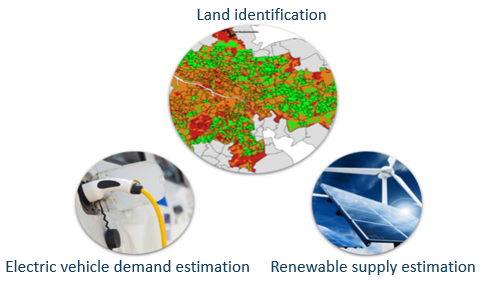
These results can be seen in the contribution section.
Using the DST
This DST provides tools to calculate the annual electricity demand for electric cars and buses, as well as tools to calculate energy output for solar PV panels and wind turbines deployed for a given amount of available land in a city.
The user is able to modify the following sheets in the DST depending on their use case.
- Data_EVD:
- Data_Bus:
- Glasgow Solar Spreadsheet:
- Wind data:
- Results_EVD:
This is the database of electric cars, which enables the user to calculate the annual electricity consumption of different car models. For our case study the average consumption of all the models included in the database were used for calculating the total demand of each scenario. However, the user can add and edit the models, enabling them to update this database and use new models for their calculations as technologies evolve. For more information on how to work with the database, click on the 'Help' button.
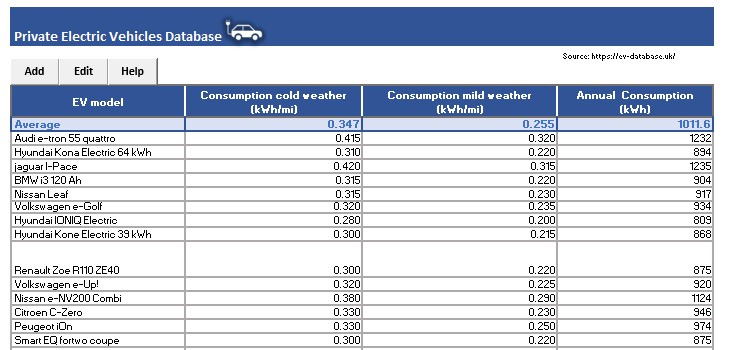
This is the database for electric buses. Data about the electricity consumption, passengers capacity, etc. is provided. The models can be edited and you can add new models if need be. For our case study, two different models of buses are used: a bus with smaller capacity (to be used within the city centre), and another with higher capacity (used in the rest of the city). For more information on how to work with the database, click on the 'Help' button.
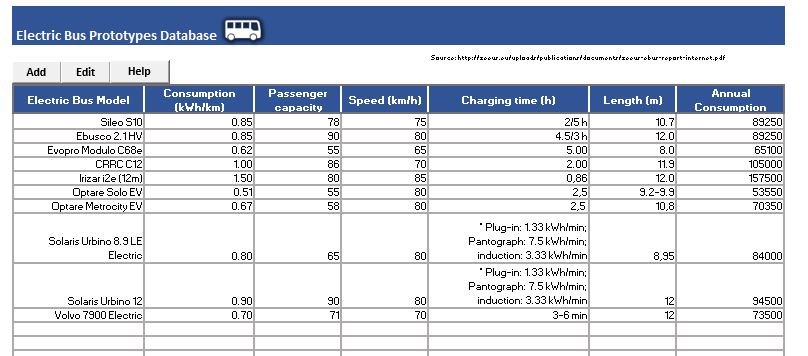
In this sheet, you can change the input data required to calculate the energy output of the PV panels, such as the longitude and latitude or the solar irradiation profile. Currently, this sheet is developed for the city of Glasgow. To change the location or update the irradation or PV panel information, go to 'Glasgow Solar Spreadsheet' (or click the button below) and edit the information. Once in the sheet click on the 'Help' button to find out more information on how to make changes.
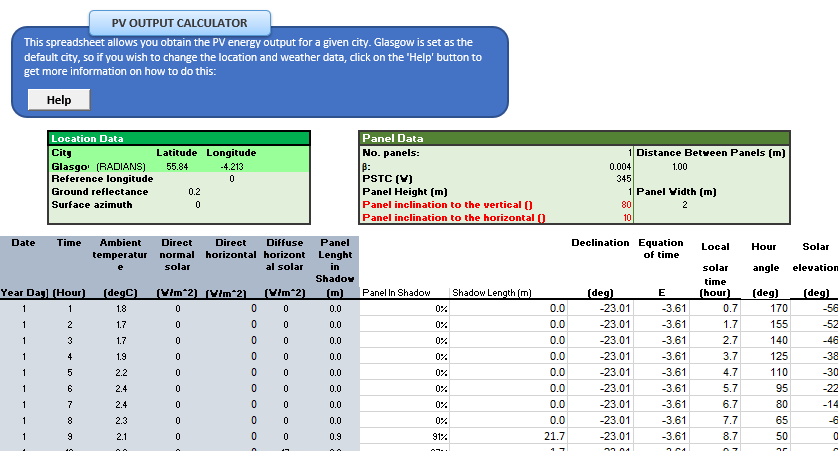
Similarly, in this sheet you can change the input data required to calculate the energy output of the wind turbines, such as the the wind profile, surface roughness, or wind speed reference height. Currently, this sheet is developed for the city of Glasgow. To change the location or update the wind profile or the turbine information, go to 'Wind data' sheet (or click the button below) and edit the information. Once in the sheet click on the 'Help' button to find out more information on how to make changes.
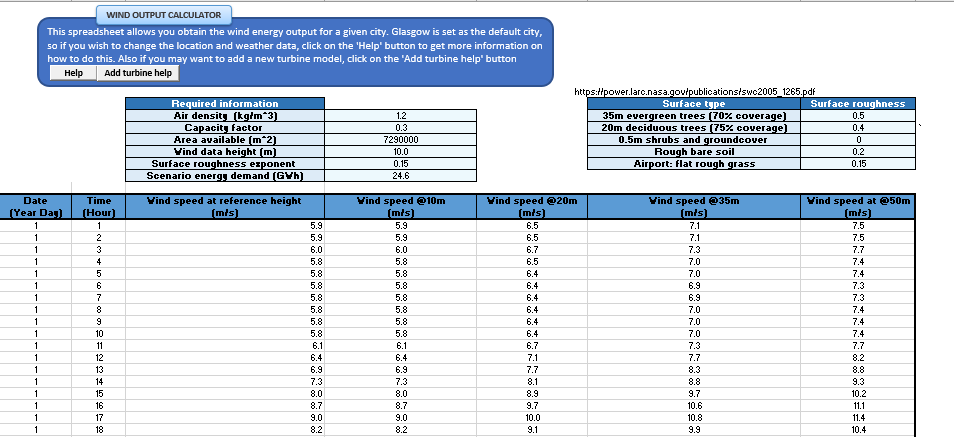
Here, the results for the contribution of wind and PV are provided. To obtain your own results follow these steps. First, it is necessary to define the model of car and buses you want to use for your scenarios. Secondly, you have to define the scenarios (that is the expected number of cars and buses for each scenario) you want to use for studying the contribution RE deployment in cities can make. Then, you need to select one scenario at a time to study the contribution. Finally, once you have studied the land availability for solar and/or wind, you should input it in the fourth and fifth modules to get the contribution of each technology. These steps are more detailed in the instructions module in the 'Results_EVD' sheet.

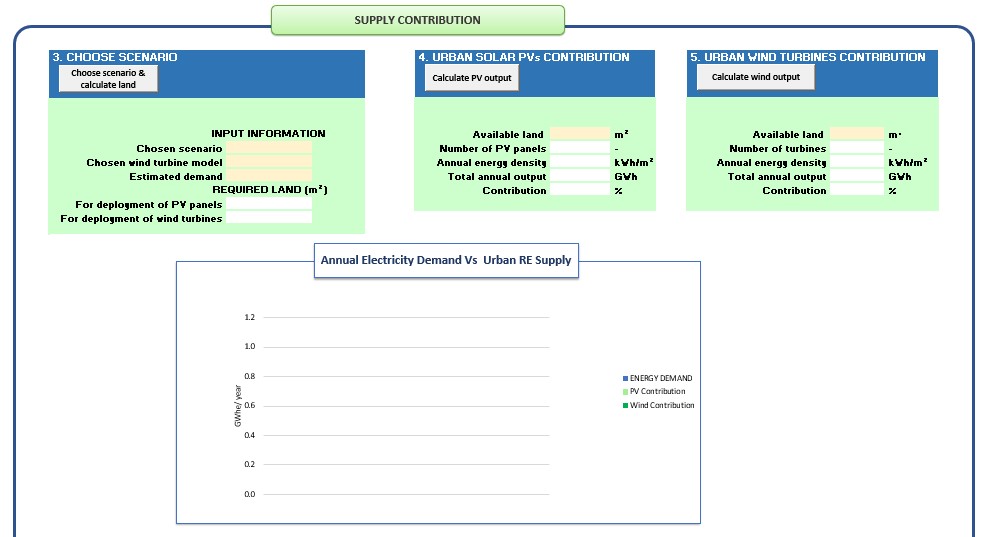
Detailed information on how to use the DST is provided in the tool itself. Use the download link below and start using it!
References
- Anon., n.d gertimga. [Online]
Available at: http://gertimga.pw/solar-panels-Reduce-Carbon-Footprint-t-Solar-Solar.html - Anon., n.d Fuel included [Online]
Available at: www.fuelincluded.com